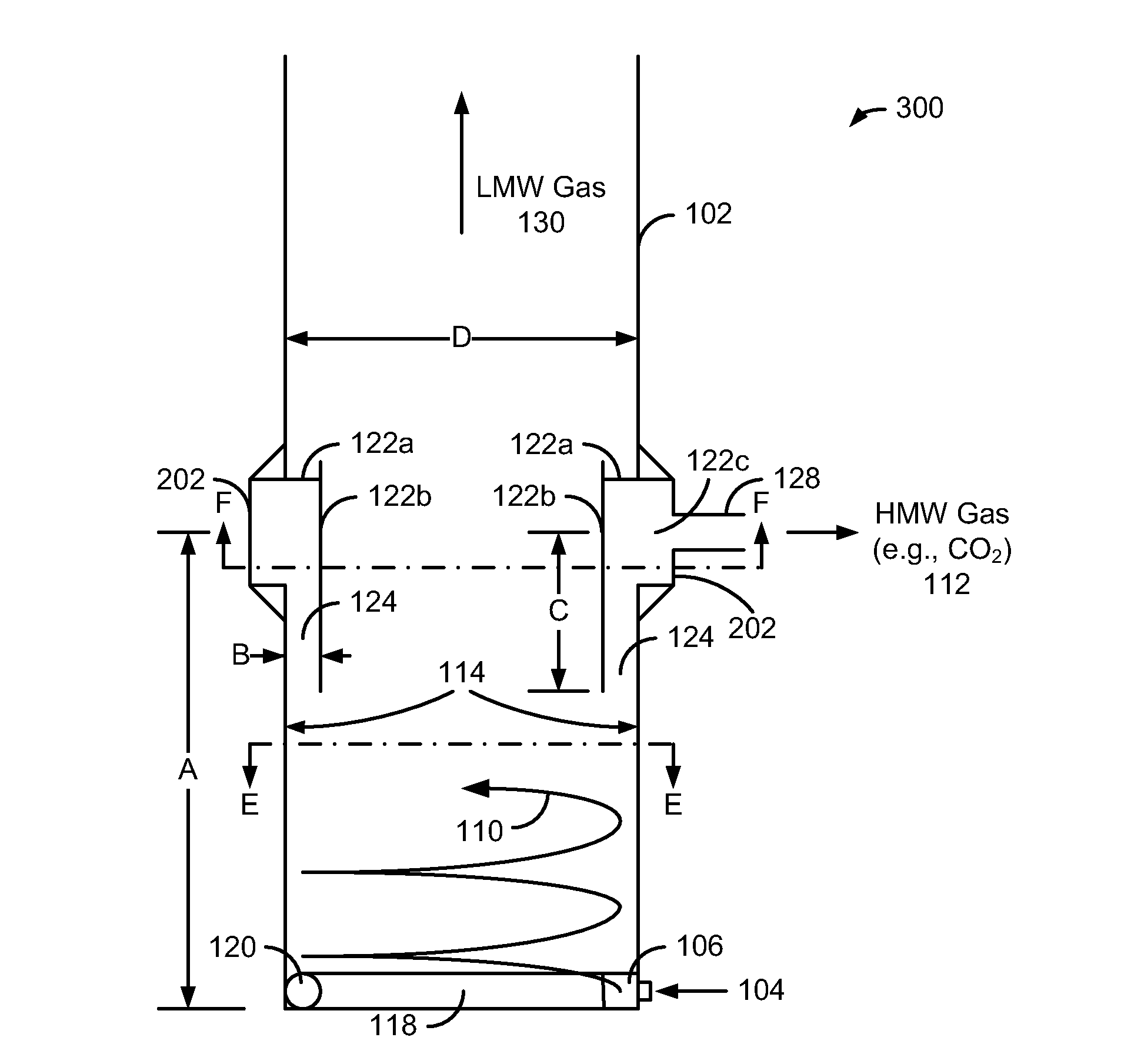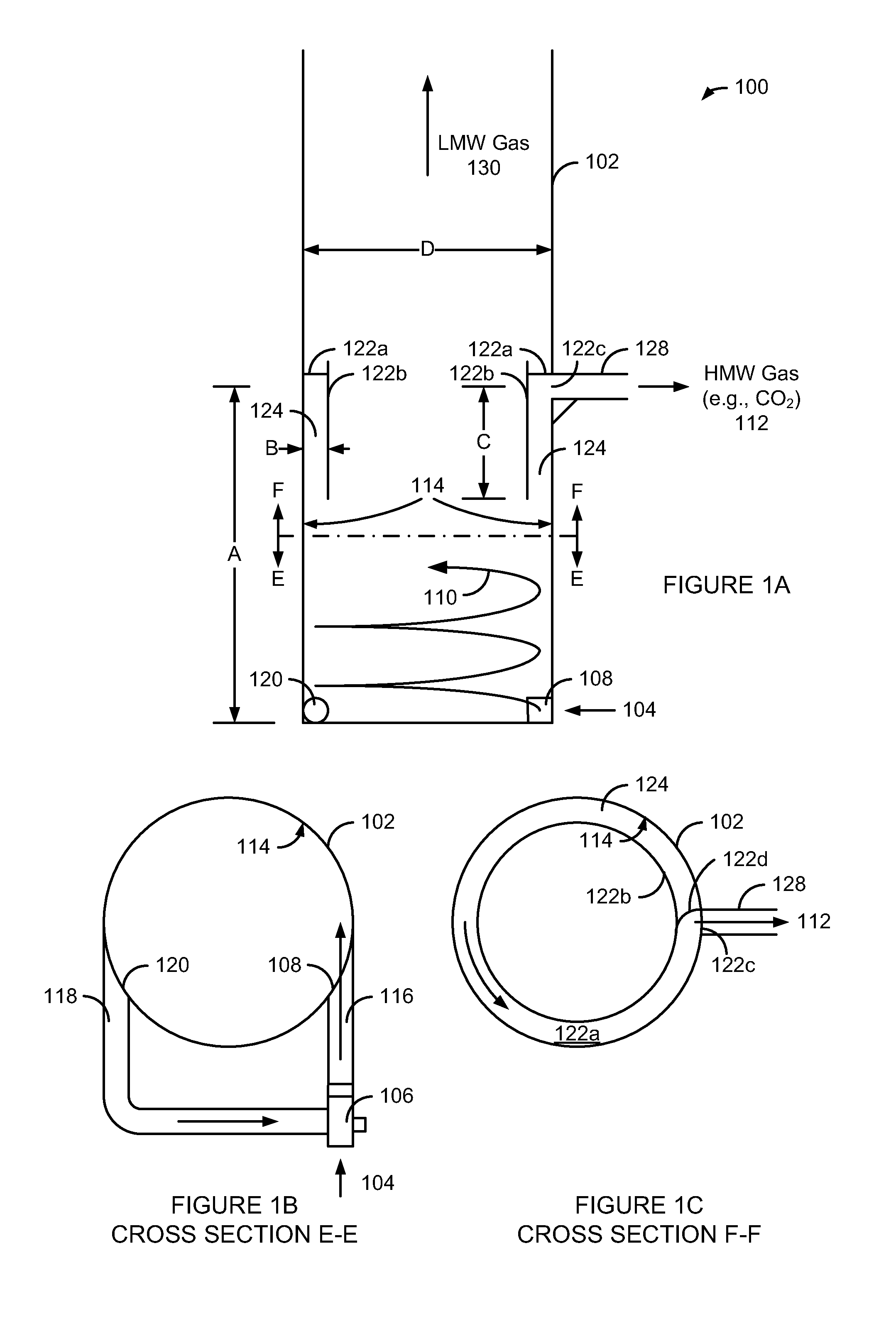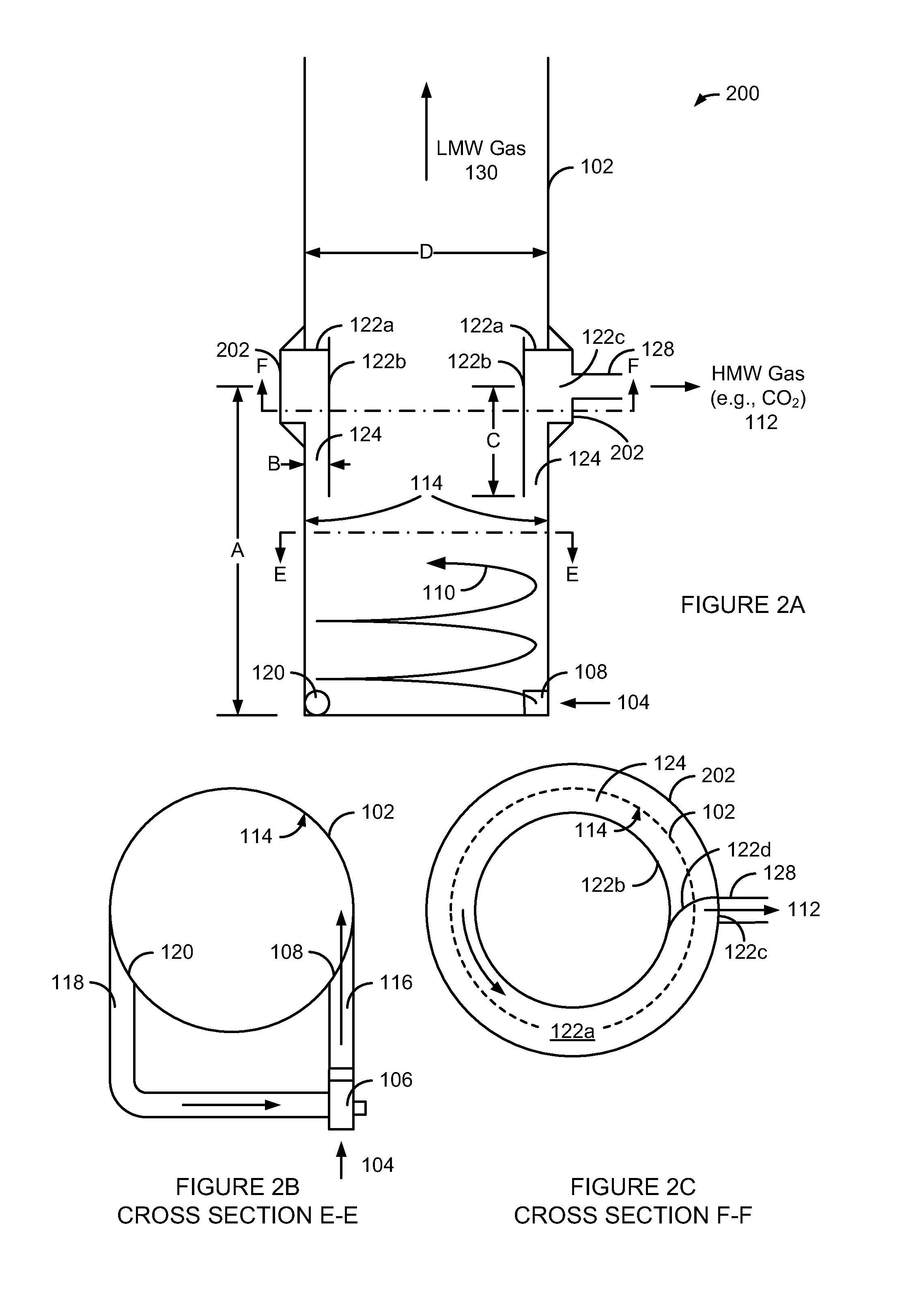Method for separating high molecular weight gases from a combustion source
a high molecular weight, combustion source technology, applied in the direction of liquid degasification, separation process, auxillary pretreatment, etc., can solve the problems of carbon dioxide emissions that are not acceptable, /sub>may be emitted at unacceptable levels, and the effect of burning fossil fuels
- Summary
- Abstract
- Description
- Claims
- Application Information
AI Technical Summary
Benefits of technology
Problems solved by technology
Method used
Image
Examples
Embodiment Construction
[0017]While the making and using of various embodiments of the present invention are discussed in detail below, it should be appreciated that the present invention provides many applicable inventive concepts that can be embodied in a wide variety of specific contexts. The specific embodiments discussed herein are merely illustrative of specific ways to make and use the invention and do not delimit the scope of the invention.
[0018]The present invention provides a system and method for separating high molecular weight gases, such as CO2, from any combustion source. More specifically, the present invention imparts centrifugal force on the exhaust or flue gas by spinning the exhaust or flue gas with enough velocity to remove the heavy components, such as CO2, to the outside diameter of the stack and removing it thru an annular space or gap formed by an interior vent. The spin needed for the centrifugal action may be imparted by using a blower to remove the gas tangentially from one side...
PUM
| Property | Measurement | Unit |
|---|---|---|
| molecular weight | aaaaa | aaaaa |
| centrifugal force | aaaaa | aaaaa |
| area | aaaaa | aaaaa |
Abstract
Description
Claims
Application Information
 Login to View More
Login to View More - R&D
- Intellectual Property
- Life Sciences
- Materials
- Tech Scout
- Unparalleled Data Quality
- Higher Quality Content
- 60% Fewer Hallucinations
Browse by: Latest US Patents, China's latest patents, Technical Efficacy Thesaurus, Application Domain, Technology Topic, Popular Technical Reports.
© 2025 PatSnap. All rights reserved.Legal|Privacy policy|Modern Slavery Act Transparency Statement|Sitemap|About US| Contact US: help@patsnap.com



